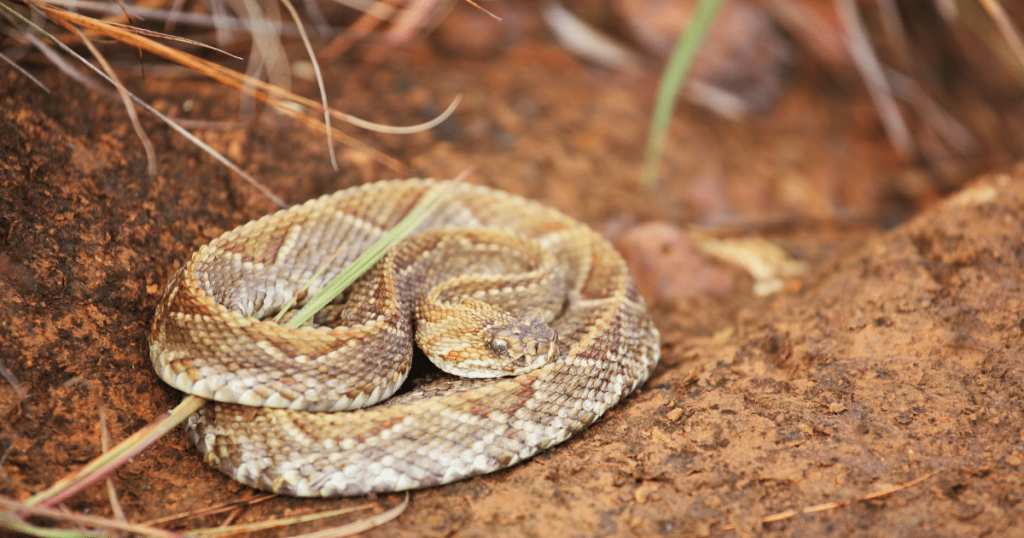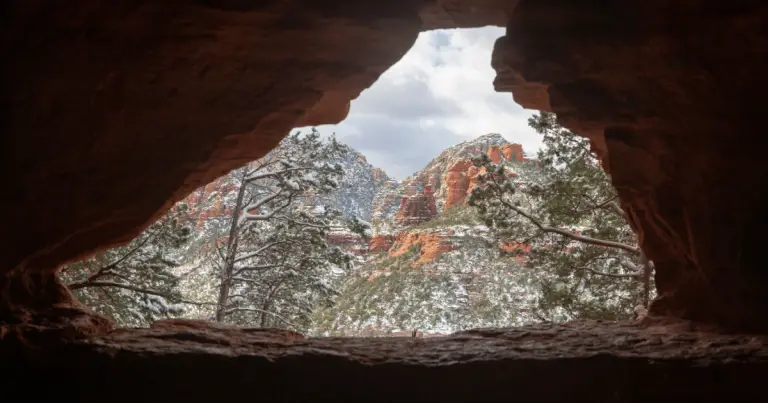Discovering the Grand Canyon Pink Rattlesnake
The Grand Canyon is home to a diverse range of wildlife, including the Grand Canyon Pink Rattlesnake. This unique species of snake is a sight to behold, with its stunning pinkish-red coloration. But there’s more to the Grand Canyon Pink Rattlesnake than meets the eye.

Species Profile: Grand Canyon Pink Rattlesnake
The Grand Canyon Pink Rattlesnake (Crotalus oreganus abyssus) is the most specialized rattlesnake in America. These snakes are perfectly adapted to their environment – their pink hue provides excellent camouflage against the red rocks of the Grand Canyon.
Scientific Classification and Identification
The Grand Canyon Pink Rattlesnake is scientifically classified in the Kingdom Animalia, phylum Chordata, and class Reptilia. It is part of the Viperidae family under the Genus Crotalus, and the species is officially named Crotalus oreganus abyssus.
When it comes to identifying features, the Grand Canyon Pink Rattlesnake presents several unique characteristics that distinguish it from other rattlesnake species. With adults generally ranging in size from 24 to 30 inches, this snake is not large by rattlesnake standards. Its most identifiable feature is, of course, its unique pinkish-red coloration that superbly camouflages it against the pink-red rocks of the Grand Canyon.
This coloration is consistent throughout its body, except darker diamond-shaped markings on its back, which further aid in camouflage. The Grand Canyon Pink Rattlesnake also displays the distinctive triangular head and cat-like elliptical eyes common to all rattlesnakes. Its tail ends in a rattle, which is a collection of interlocking segments made of keratin, the same substance our fingernails are made from.
Habitat and Range
The Grand Canyon Pink Rattlesnake thrives within the rugged environment of the Grand Canyon. This species is highly dependent on the desert ecosystem found here, characterized by arid conditions and red rock formations. These snakes favor rocky outcrops and crevices, which provide excellent concealment and hunting grounds.

Geographically, the Grand Canyon Pink Rattlesnake has a highly specialized and confined range. The species is endemic to the Grand Canyon, meaning they are not found naturally anywhere else in the world. This limited distribution within the Grand Canyon includes both the North and South Rims and extends from the rim down to the Colorado River. Such a tightly restricted range highlights the snake’s specific adaptation to this unique environment and underlines its importance within the Grand Canyon’s complex biodiversity.
Behavioral Traits and Lifestyle
The Grand Canyon Pink Rattlesnake is a creature of habit, displaying a distinct set of behavioral traits that are honed for survival within the arid landforms of the Grand Canyon.
Nocturnal Habits and Hunting Strategies
These snakes are primarily nocturnal, preferring to venture out during the cool desert evenings. This not only helps them avoid the scorching daytime temperatures but also positions them well to hunt for their prey, which are often most active at night. Their hunting strategy relies on ambush tactics, wherein they blend with the rocky environment and strike rapidly at passing prey.
Interaction with Other Wildlife and Role in the Ecosystem
Interaction with other wildlife within the Grand Canyon largely revolves around predator-prey relationships. The Grand Canyon Pink Rattlesnake primarily feeds on small mammals, birds, and lizards. Despite its venomous nature, this rattlesnake has predators too. Larger birds of prey, like hawks and eagles, and mammals, such as coyotes and bobcats, are known to prey on them.
The Grand Canyon Pink Rattlesnake plays a crucial role in the ecosystem, helping to control the population of smaller creatures and serving as a food source for larger predators. This intricate web of relationships highlights the importance of the Grand Canyon Pink Rattlesnake in maintaining the balance of the Grand Canyon’s vibrant ecosystem.
Adaptations to the Grand Canyon Environment
The Grand Canyon Pink Rattlesnake exhibits a variety of impressive adaptations that offer survival advantages in the harsh conditions of the Grand Canyon. These adaptations underline its resilience and niche specialization within this unique ecosystem.

Camouflage and Stealth Techniques
The Grand Canyon Pink Rattlesnake’s most intriguing adaptation to the Grand Canyon environment lies in its distinctive pinkish-red coloration. This coloration is not a mere aesthetic trait; it is a crucial survival tool. The snake’s hue closely matches the unique red and pink rock formations of the Grand Canyon, allowing it to blend seamlessly into the environment. This camouflage technique provides two key advantages.
Firstly, it enables the snake to avoid detection from potential predators, enhancing its chances of survival. Secondly, it aids in hunting. The snake can remain inconspicuous amidst the rocks, waiting patiently for prey to venture close.
Once within striking distance, the rattlesnake can launch a rapid surprise attack. This blend of stealth and camouflage underscores the snake’s remarkable adaptation to the Grand Canyon’s environment, optimizing its survival and success in this unique habitat.
Survival Strategies in Arid Conditions
The Grand Canyon Pink Rattlesnake employs an array of survival strategies to cope with the harsh, arid conditions of its native Grand Canyon habitat.
Coping Mechanisms for the Arid Climate of the Canyon
One of the primary challenges the snake faces is the extreme heat and dryness that characterize the canyon’s climate. To cope with these conditions, the snake has developed behavioral adaptations.
During the hottest parts of the day, the snake retreats to cooler, shaded areas among the rocks and crevices to avoid heat exposure and dehydration. Furthermore, the snake’s primarily nocturnal lifestyle enables it to conduct its active life processes during the cooler night hours, minimizing the risk of overheating and water loss.
Water-Seeking Behavior and Strategies for Hydration
In terms of hydration, the Grand Canyon Pink Rattlesnake has a water-seeking behavior honed for the desert environment. After rainfall, which is infrequent in the arid canyon, these snakes can often be sighted slithering across wet rocks and surfaces, absorbing water through their skin and mouth.

They also derive moisture from the prey they consume, which forms a significant portion of their water intake. The snake’s ability to store water in its body, coupled with its efficient use of this stored water, further illustrates its remarkable adaptations to the arid conditions of the Grand Canyon. These survival strategies underscore the snake’s ability to thrive and persist in one of the most challenging environments on the planet.
Interactions with Humans and Conservation Efforts
Human interaction with the Grand Canyon Pink Rattlesnake is typically limited due to the snake’s reclusive, and primarily nocturnal nature. However, as human presence within the Grand Canyon National Park continues to increase, encounters between people and these snakes are not uncommon. They are generally non-aggressive towards humans unless provoked, and bites, while very rare, should be treated immediately due to their venomous nature.
On the conservation side, the Grand Canyon Pink Rattlesnake is currently not listed as a threatened or endangered species. However, its extremely specialized habitat within the Grand Canyon means that any significant changes to this environment could potentially threaten the survival of the species.
Therefore, conservation efforts are primarily focused on preserving the integrity of the Grand Canyon ecosystem. This includes measures to mitigate the impacts of human activities such as tourism, development, and pollution. Education also plays a significant role in these efforts. By raising awareness about the snake’s role in the ecosystem and promoting responsible behavior among visitors, park authorities work to ensure the survival and prosperity of the Grand Canyon Pink Rattlesnake.
Final Thought
Grand Canyon Pink Rattlesnake is a fascinating embodiment of nature’s adaptive capabilities. Its physical, behavioral, and ecological adaptations reveal a profound synchronization with the arid and harsh environment of the Grand Canyon. These adaptations, from its unique coloration that aids in camouflage to its nocturnal lifestyle and water-seeking behavior, all contribute to its survival in this challenging habitat.
Its role in the ecosystem is significant, acting as both predator and prey, underscoring the interdependencies within the Grand Canyon’s vibrant biodiversity. The existence and survival of the Grand Canyon Pink Rattlesnake ultimately bear testimony to the extraordinary resilience and diversity of life on our planet.







